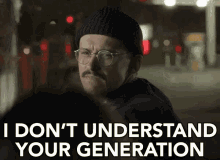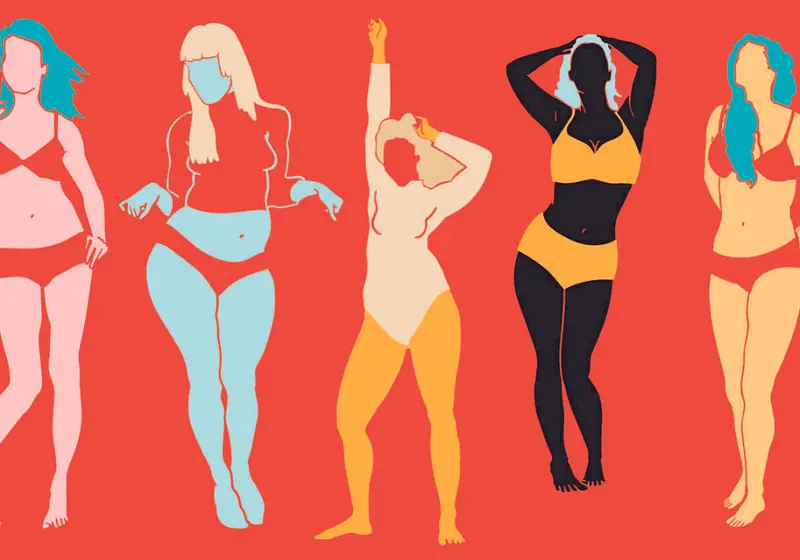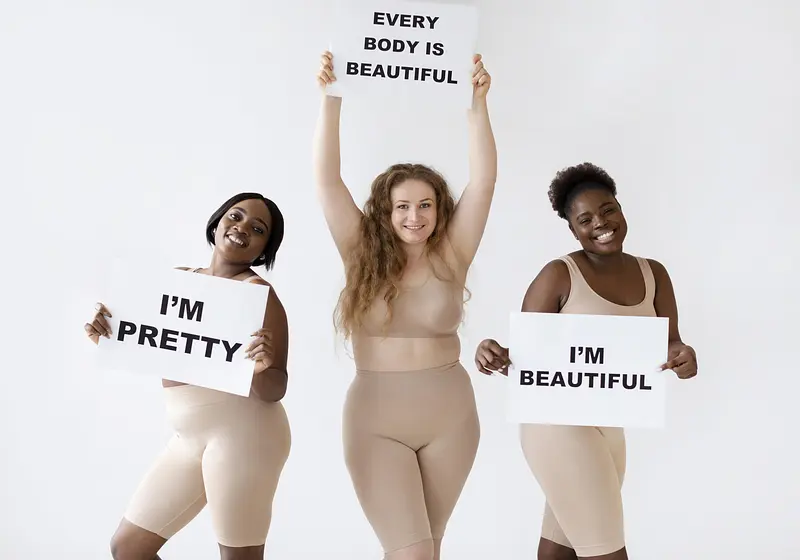Body image is a struggle everyone deals with in one way or another. From a young age, we've been told which features are attractive and are constantly pressured to fit into the mold of the "ideal body." Though standards have changed over time, those in the past century all revolve around the same thing: being thin.
For too long, we've seen only thin bodies idealized, not just in the media, but in the fashion industry, as well. Only recently have plus-sized bodies been getting some semblance of recognition. However, many fail to acknowledge the women and girls whose bodies fall in the middle— or, as they're now being referred to, "mid-sized" bodies.
This overwhelmingly large market of women (the average American woman wears a size 16) who find themselves too large for straight-sized clothes and too tiny for plus-sized ones is being completely neglected in the pursuit of marketing towards thinner women. It's for this reason that the mid-sized girl is not only worth discussing, but critical for the discourse about the way women's beauty standards impact millions across the globe.
Let us slide into your dms 🥰
Get notified of top trending articles like this one every week! (we won't spam you)Bodies Throughout History
It's no surprise that beauty standards have been a fixture in society since the dawn of time. Yet our current version of the ideal female body is strikingly different from standards in decades past.
Prior to the 20th century, there was a heavy emphasis on a curvy physique. "Fatness" was seen as a sign of wealth; it meant that one could afford to pay for daily meals, as opposed to the general population that had little access to food and struggled with famine.
That being said, people gradually began to shift away from this viewpoint. Though there were many attempts to push the idealization of thinness in the past, none quite stuck like the emergence of the 1920s. For the first time, thinness became a defining criterion of the "perfect" body, and it's remained that way ever since.
With this push came the influence of the media. American women began to see weight loss advertisements, "new" and "proven-to-work" diets, and products guaranteed to help slim down any lady.
By the time models like Twiggy became popular in the 1960s, thinness was firmly and unmovably rooted in American beauty measures. Though certain standards evolved over the years (a more athletic body in the 80s, a "heroin chic" thin look in the 90s), the main point remained the same: being thin was the only way to be seen as attractive.

Take the Quiz: Which Generation Matches Your Personality?
Discover the generation you truly belong to!
When We Started Caring About the Mid-Sized Girl
As the body positivity movement gained traction over the past few years, many women across the globe learned to embrace their bodies, regardless of whether or not they fit in with the United States' present-day standards. It circulated across many social media platforms before taking over TikTok, where mid-sized girls finally gained their well-deserved voices.
It's unclear when, exactly, the mid-sized girl became so popular on social media, but the "Bodies that look like this, also look like this" trend seems to be one of the earliest examples. In it, users show off their bodies in flattering angles, then reveal some of their "imperfections" like cellulite and back rolls— all things that are totally normal to have. Soon, the expression "Normalize normal bodies" began to make its rounds.
Users didn't just see examples of perfect, Instagram-worthy bodies; they saw girls who looked like themselves— not quite plus-sized, not quite straight-sized. This representation, quite frankly, was groundbreaking.
With over 2.8 billion views on TikTok, #midsize was born and took the internet by storm. From detailing realistic shopping hauls to expressing the problems mid-sized girls encounter, an underrepresented body type was finally being thrust into the spotlight. Here was proof that the spectrum of bodies includes more than just those at both ends; it accounts for all those in the middle, too.
The Struggle of the Mid-Sized Girl
All body types have a history of being critiqued, and no matter how someone looks, chances are they've dealt with their fair share of body image issues. Plus-sized women, for example, actively face fatphobia and struggle with clothes shopping. Thin women deal with skinny-shaming and backhanded comments about their appearance.
It should come as no surprise, then, that mid-sized women face challenges of their own. They're not quite overweight, but they're not model-skinny, either. Although they have a wider range of options than plus-sized women, it's hard to find something that fits perfectly. Feeling big next to their thinner friends is a common experience, yet expressing dissatisfaction with their weight seems insensitive when with plus-sized companions.
It's difficult, honestly, to feel part of a larger movement in which body acceptance is the main focus when those who fall in the middle aren't even recognized.
Why Does This Matter?
Bodies come in a variety of shapes and sizes. There's no "one way" for women to look, nor are there popular beauty standards attainable for everyone. However, it seems as if the fashion industry and the media constantly fail to remember that.
The body positivity movement has made great progress by pushing for more inclusivity in these areas, and many companies have been trying to market off of that. Stores like ASOS and Anthropologie, for example, offer a wider range of sizes in the name of inclusivity. But in order to be truly successful, all bodies need to be represented everywhere.
Before those aforementioned TikToks, I'd never seen mid-sized girls wearing trendy clothing— women who looked like me and were so unabashedly confident. Finding and identifying with the term "mid-sized" made me feel like I finally had a place in the body positivity movement.
For the first time, I saw myself represented. I'd watch these girls try on clothes and admire their figures, then remind myself, "Hey, I look like this, too! So if they look and feel so amazing, what's there to stop me?"
If merely stumbling upon these fifteen- to thirty- second clips had such a profound impact on my self-esteem, imagine what features in magazines and television shows would do for millions across the globe struggling with their own self-image.
It's not an overnight switch. Mid-sized women aren't going to suddenly stop feeling insecure, as society's emphasis on thin bodies still exists, but it's the start of something. These women are carving out their own space in the movement, all the while inspiring others to embrace themselves instead of trying to meet impossible standards.
Representation matters, and discourse about the body positivity movement shouldn't end without acknowledging the women and girls who land in the middle.













